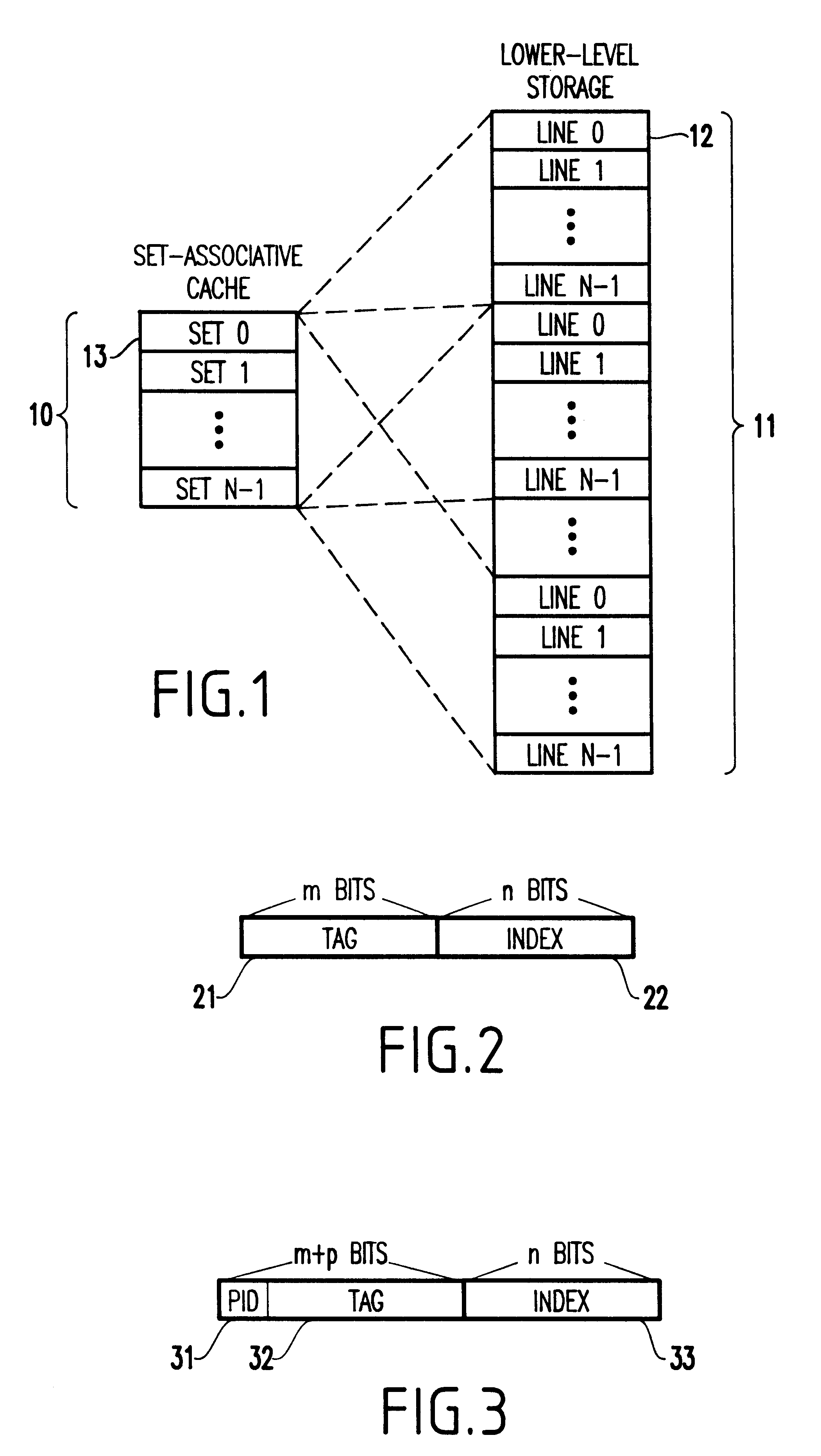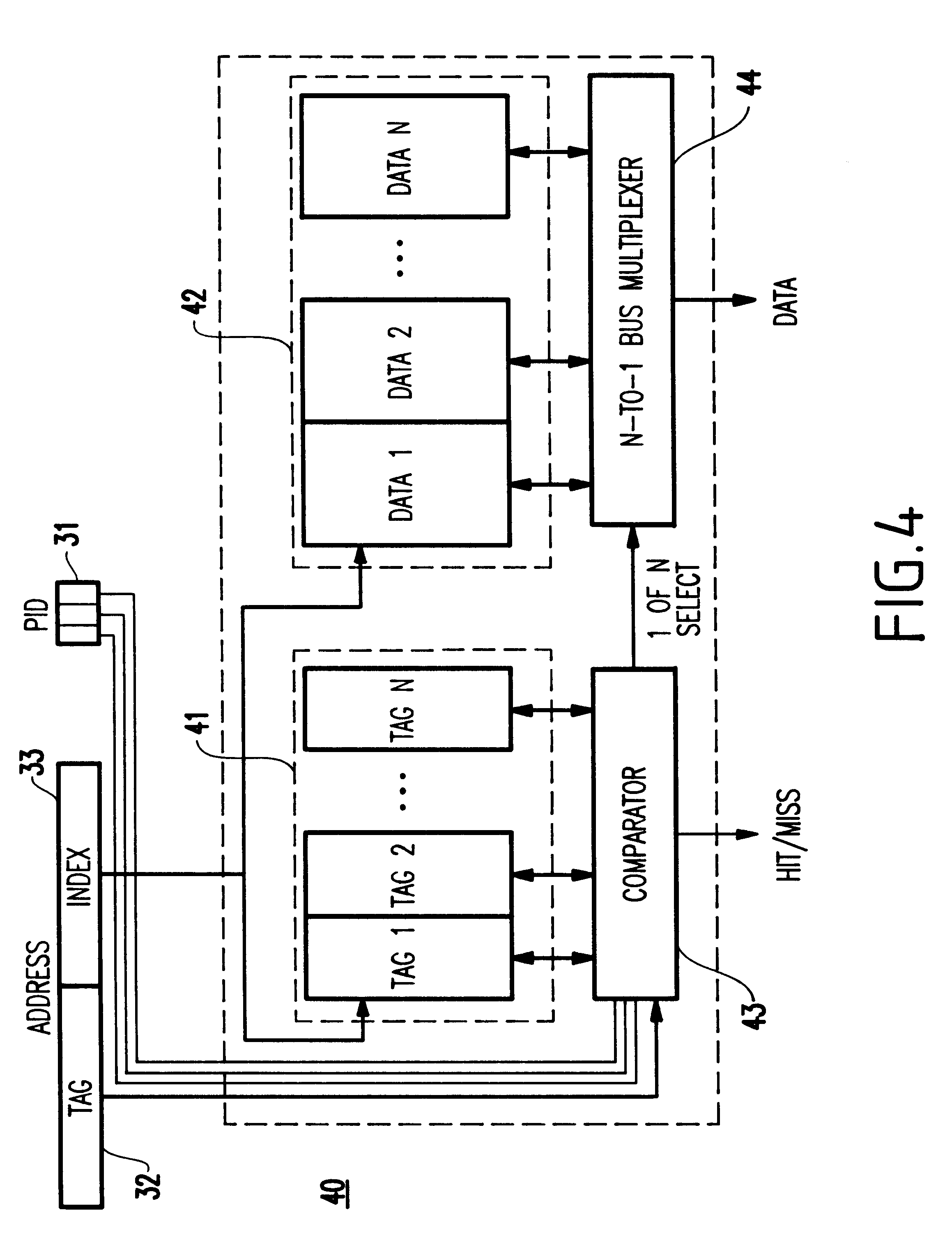Method and system for dynamically partitioning a shared cache
a technology of shared caches and methods, applied in the field of storage hierarchy caches, can solve the problems of destructive collisions, affecting the performance of the cache, and affecting the stability of the cache,
- Summary
- Abstract
- Description
- Claims
- Application Information
AI Technical Summary
Problems solved by technology
Method used
Image
Examples
first embodiment
The first embodiment has several advantages. For example, partitions compete for storage, and the portion of the cache occupied by any given partition varies dynamically. Therefore, there is no need for a mechanism to allocate cache space to partitions.
The competition for cache lines between partitions is expected to result in a steady state occurring, where each partition has a portion of the cache proportional to its access frequency, and hence, need. The technique and cache partitioning system of the first embodiment adjusts dynamically to the cache resource needs of the partitions.
Additionally, the first embodiment has a negligible impact on cache performance because the only significant addition to the conventional cache implementation is a minor extension in the width of the tag comparators.
However, a drawback of the first embodiment of the present invention is that there is no guaranteed "fairness" of cache storage space to the partitions, nor does it allow a partition to res...
second embodiment
The second embodiment was designed to overcome several of the above-mentioned drawbacks of the first embodiment. Quite simply, the second embodiment assigns "guaranteed space" to predetermined ones of the partitions.
In the second embodiment of the invention, as shown by FIGS. 5-7, the index sets of the cache are partitioned into disjoint groups, or "cache partitions" of various sizes, and each partition is allocated a unique cache partition with a size that meets its needs.
Furthermore, the sizes of the cache partitions can be varied dynamically to adjust to resource needs.
In the second embodiment, cache partitioning is accomplished by forcing (e.g., constraining) some of the index bits in the address presented to the cache to particular values based upon the partition performing the reference. This "constraining" has the effect of restricting the index to a subset of the total sets in the cache.
FIG. 5 illustrates how a cache address is manipulated by the second embodiment to provide...
PUM
 Login to View More
Login to View More Abstract
Description
Claims
Application Information
 Login to View More
Login to View More - R&D
- Intellectual Property
- Life Sciences
- Materials
- Tech Scout
- Unparalleled Data Quality
- Higher Quality Content
- 60% Fewer Hallucinations
Browse by: Latest US Patents, China's latest patents, Technical Efficacy Thesaurus, Application Domain, Technology Topic, Popular Technical Reports.
© 2025 PatSnap. All rights reserved.Legal|Privacy policy|Modern Slavery Act Transparency Statement|Sitemap|About US| Contact US: help@patsnap.com



